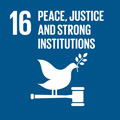- Docente: Andrea Piras
- Credits: 6
- SSD: L-OR/14
- Language: Italian
- Teaching Mode: In-person learning (entirely or partially)
- Campus: Ravenna
- Corso: Second cycle degree programme (LM) in History, preservation and enhancement of artistic and archaeological heritage and landscape (cod. 9218)
-
from Nov 11, 2025 to Dec 16, 2025
Learning outcomes
The teaching aims at explaining the relationships between the inscriptions and the materials used to written down it (rocks, metals, clay), located in archaelogical sites of Pre-Islamic Iran. The cultural heritage of the archaeological and artistic goods will be envisaged in accordance with geography and landscapes wherein human artifacts were built. The student learns the specific link of the epigraphy with its support and the communication values (poltical, ideological, religious) of the Achaemenid civilizations and its legagy in Hellenistic Iran, and its relations with India, Central Asia, Mesopotamia and Hellenic world; the student also achieves a competence in the evaluation of the cultural good (inscriptions and monuments).
Course contents
The Building Site of the Epigraphy: from Rock Inscription on Display to parchment.
The teaching points to show the connections between architecture, iconography, geography and epigraphy, taking into account the monumental Inscriptions of Pre-Islamic Iran as a whole (Achaemenid, Parthians, Sassanids), in comparison with Hellenistic and Kushan epigraphies. The following ethnolinguistic and sociolinguistic topics will be examined: the ideological message of propaganda, the royal legitimation and political communication addressed to the subjects, by means of epistolography and heralds. A special analysis of the semiological intentions (to mark an object with the writing: plates, stelae, seals, furnitures) will be particularly envisaged, and also the symbolical and anthropological uses of the writings.
Readings/Bibliography
BIBLIOGRAPHY
G.P. Basello, "Guida epigrafica dell'Iran antico" (www.elamit.net/iran2004/persepolis_inscriptions.htm )
H. Humbach, "Epigraphy 1. Old Persian and Middle Iranian Epigraphy" in Encyclopaedia Iranica(http://www.iranicaonline.org/articles/epigraphy-i )
R.G. Kent, Old Persian. Grammar, Texts, Lexicon, New Haven 1953.
P. Lecoq, Les inscriptions de la Perse achéménide, Paris 1997.
The students unable to attend the course have to read the before quoted article of H. Humbach (downloading from the link), plus the following readings:
G. R. Cardona, Storia universale della scrittura, Mondadori, Milano 1986 (pp. 117-126; 161-170).
G. R. Cardona, Etnografia della comunicazione e documenti antichi: il caso dell'antico-persiano. Vicino Oriente 3, 1980, pp. 277-286.
Students with learning disability (DSA): preparatory bibliography.
A.V. Rossi, Competenze multiple nei testi arcaici: le iscrizioni di Bisotun. Annali Istit.Univ.Orient. di Napoli -sez. linguistica, 7, 1987, pp. 191-210.
A. Piras, Del buon uso delle lettere. Note sull'epistolografia nei documenti iranici. Litterae Caelestes 3, 2008-2009, pp. 49-70.
Teaching methods
Lessons and discussion of the didactical materials and bibliography. Given the linguistic aspect of the teaching, the participation to the course is highly recommended
Assessment methods
The evaluation of learning will take place through individual interviews.
No distinction will be made between attending and non-attending students as regards the assessment policy.
The student will have to prove that he/she has the basic notions of Ancient Iranian civilisation. On the basis of the lessons attended, the student must be able to contextualise the documentary sources submitted. The test will also involve a precise questioning of all the texts indicated in the bibliographic programme.
EXCELLENT EVALUATION
If the student demonstrates knowledge of the subject, an excellent capacity for exposition and logical connections between different historical-archaeological problems, he/she will obtain the maximum mark (30). If the presentation is excellent, honours will be added (cum laude).
GOOD OR FAIR EVALUATION
Students with basic knowledge who are able to contextualise the materials examined, even if the language used is not always appropriate to the subject, will pass the examination. The awarding of a mark more or less close to 29 will depend on the critical capacity, the methodological autonomy demonstrated during the interview and the fluency of the discourse that the student will be able to organise in response to the questions.
SUFFICIENT EVALUATION
Students whose basic knowledge is not homogeneous and who have little mastery of exposition, but who are able to answer correctly, showing that they have done at least some preparatory work on their notes and/or texts, will be awarded a mark between 18 and 25.
NEGATIVE EVALUATION
Students with a lack of preparation, no ability to analyse the discipline and who have not memorised the bibliography will not pass the exams.
Teaching tools
Discussion of the didactical tools and materials; display of images and power-points, reading and explications of the Old Persian Achaemenid inscriptions (in translitteration), by using the manual of P.O.Skjaervo, Old Persian Primer (https://www.fas.harvard.edu/ [https://www.fas.harvard.edu/~iranian/OldPersian].
Uploading of didactic tools on the web-page of the teaching.
LABORATORY. The "Laboratory for Ethnohistory of the Iranian and Caucasian Area" displays specific approaches of deepening and seminaries, aiming at developing the student's skills of research and interactions.
Students who are affected by learning disability (DSA) and in need of special strategies to compensate it, are kindly requested to contact the Teacher, in order to be referred to the colleagues in charge and get proper advice and instructions
Links to further information
http://www.iranicaonline.org/articles/epigraphy-index
Office hours
See the website of Andrea Piras
SDGs




This teaching activity contributes to the achievement of the Sustainable Development Goals of the UN 2030 Agenda.
